-
 Bitcoin
Bitcoin $115800
-2.47% -
 Ethereum
Ethereum $3690
1.19% -
 XRP
XRP $3.105
-1.91% -
 Tether USDt
Tether USDt $0.9999
-0.07% -
 BNB
BNB $771.0
0.19% -
 Solana
Solana $179.9
-3.54% -
 USDC
USDC $0.9998
-0.03% -
 Dogecoin
Dogecoin $0.2291
-3.40% -
 TRON
TRON $0.3140
0.81% -
 Cardano
Cardano $0.8007
-1.24% -
 Hyperliquid
Hyperliquid $42.92
-0.44% -
 Stellar
Stellar $0.4212
-2.16% -
 Sui
Sui $3.730
0.03% -
 Chainlink
Chainlink $18.06
0.03% -
 Bitcoin Cash
Bitcoin Cash $546.6
5.08% -
 Hedera
Hedera $0.2438
0.55% -
 Avalanche
Avalanche $23.57
-0.81% -
 Litecoin
Litecoin $114.2
1.04% -
 UNUS SED LEO
UNUS SED LEO $8.970
-0.35% -
 Shiba Inu
Shiba Inu $0.00001363
-0.16% -
 Toncoin
Toncoin $3.136
-0.89% -
 Ethena USDe
Ethena USDe $1.001
-0.04% -
 Uniswap
Uniswap $10.30
1.42% -
 Polkadot
Polkadot $4.013
-0.06% -
 Monero
Monero $324.8
0.87% -
 Dai
Dai $0.9999
-0.04% -
 Bitget Token
Bitget Token $4.509
-1.38% -
 Pepe
Pepe $0.00001226
-2.60% -
 Aave
Aave $291.8
1.34% -
 Cronos
Cronos $0.1294
2.19%
The buying signal of the daily line breaking through the upper edge of the box and then shrinking and stepping back
A daily close above the box’s upper edge with high volume signals bullish momentum; watch for a tight pullback to confirm a valid breakout before entering.
Jul 24, 2025 at 01:42 pm
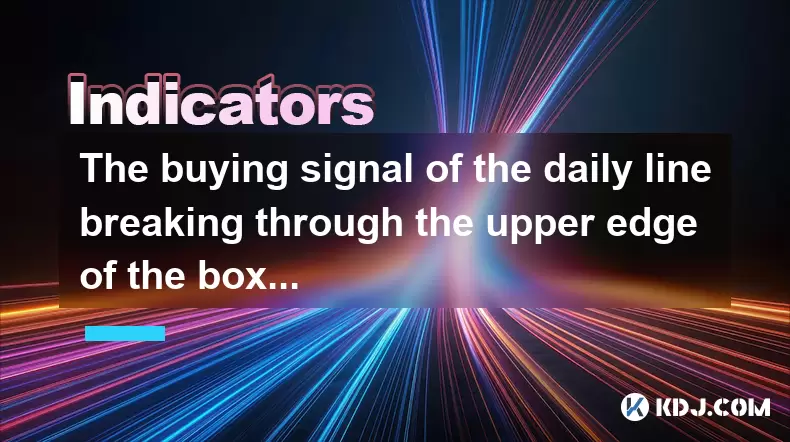
Understanding the Daily Line Breakout Signal
In technical analysis within the cryptocurrency market, one of the most closely watched patterns is the daily line breaking through the upper edge of the box. This refers to a situation where the price of a cryptocurrency, after consolidating within a defined horizontal range (commonly known as a "box" or "trading range"), finally moves above the upper boundary of that range on a daily candlestick chart. This breakout is considered a potential buying signal, indicating that bullish momentum may be building. The box is formed by consistent support and resistance levels, where price repeatedly bounces between a lower limit (support) and an upper limit (resistance). When the daily close exceeds the resistance level, it suggests that buyers are overpowering sellers.
It’s essential to confirm that the breakout is genuine and not a false move. Traders often wait for the candle to close definitively above the upper edge. A closing price above resistance adds more credibility than an intraday spike that retreats. Volume plays a critical role during this phase. A breakout accompanied by significantly higher trading volume increases the reliability of the signal. Low volume breakouts are more likely to fail and result in a pullback.
The Significance of Post-Breakout Contraction
After the breakout, the next critical phase is the shrinking and stepping back behavior. This refers to a period where the price pulls back slightly into the previous consolidation zone but forms smaller-range candles, indicating reduced selling pressure. This contraction is often interpreted as a healthy retest of the former resistance level, which now acts as new support. The narrowing price action suggests that volatility is decreasing, and the market is pausing before potentially resuming its upward trajectory.
During this contraction phase, traders monitor key elements:
- Candlestick patterns such as doji, spinning tops, or small-bodied candles that reflect indecision and tightening ranges.
- Moving averages, especially the 20-day or 50-day EMA, to see if the pullback holds above these levels.
- Order book depth on exchanges to assess whether buy walls are forming near the retest zone.
This phase is not a reversal signal but rather a consolidation within a new higher range. The presence of tightening price action after a breakout often precedes another leg up, especially if support holds.
How to Confirm the Buying Signal
To avoid false signals, traders use multiple confirmation tools. One effective method is combining price action with momentum indicators. The Relative Strength Index (RSI) should remain above 50 during the pullback, indicating underlying bullish strength. If RSI dips below 50 and stays there, the breakout may be losing steam.
Another confirmation comes from the MACD (Moving Average Convergence Divergence) indicator. Traders look for the MACD line to remain above the signal line during the contraction phase. A crossover back upward after a brief convergence can signal renewed momentum.
Volume analysis is equally vital. During the pullback, volume should be lower than during the initial breakout. Diminishing volume on down moves suggests lack of selling interest. If volume spikes on the downside during the retest, it may indicate distribution and a potential failure of the breakout.
Additionally, checking higher timeframes such as the weekly chart can provide context. A daily breakout that aligns with a larger uptrend on the weekly chart carries more weight.
Step-by-Step Entry Strategy
Executing a trade based on this signal requires precision. Here is a detailed operational guide:
- Identify the box range by drawing horizontal lines at the most recent swing high (resistance) and swing low (support) on the daily chart.
- Wait for a daily close above the upper boundary with above-average volume.
- Observe the next 1–3 days for a pullback into the upper half of the prior box or slightly below the breakout level.
- Look for candlestick contraction — smaller bodies, reduced wicks, and tight trading ranges.
- Place a buy order slightly above the high of the contraction candle to confirm resumption of upward movement.
- Set a stop-loss just below the breakout level or the most recent swing low in the pullback zone.
- Use a risk-reward ratio of at least 1:2 by projecting the height of the original box upward from the breakout point.
This strategy works particularly well in trending markets where cryptocurrencies exhibit strong momentum after consolidation. Exchanges like Binance or Bybit offer charting tools that allow traders to draw these levels and set conditional orders.
Managing Risk During the Pullback Phase
Even with a strong breakout, the market can be volatile. Cryptocurrencies are prone to sharp corrections, so risk management is crucial. One common mistake is entering during the initial breakout without waiting for the contraction. This increases exposure to fakeouts.Instead, traders should:
- Avoid chasing price immediately after the breakout; patience improves entry quality.
- Use limit orders during the pullback to enter at better prices.
- Monitor funding rates in futures markets — extremely high positive rates may indicate over-leveraged long positions, increasing the risk of a squeeze.
- Watch for news events or macroeconomic factors that could disrupt the pattern, such as regulatory announcements or exchange outages.
Position sizing should reflect the uncertainty of the pullback. Allocating only a portion of capital allows room for averaging in if the contraction extends.
Frequently Asked Questions
What defines the "upper edge of the box" in crypto charts?
The upper edge is the horizontal resistance level formed by previous price swing highs where the cryptocurrency repeatedly failed to move higher. It is drawn by connecting at least two or more price peaks of similar value on the daily chart.How long should the contraction phase last after the breakout?
Typically, the contraction lasts between 1 to 5 daily candles. A longer consolidation may indicate weakening momentum, while a very short pullback might suggest strong bullish control.Can this signal appear on altcoins as well as Bitcoin?
Yes, this pattern is common across all cryptocurrencies, including altcoins. However, it tends to be more reliable on high-market-cap assets with deeper liquidity, such as ETH, BNB, or SOL, due to reduced manipulation risk.Is it necessary to use leverage when trading this signal?
No, leverage is optional. While futures traders may use it to amplify gains, spot traders can effectively capitalize on this signal without leverage, reducing liquidation risk during volatile retracements.
Disclaimer:info@kdj.com
The information provided is not trading advice. kdj.com does not assume any responsibility for any investments made based on the information provided in this article. Cryptocurrencies are highly volatile and it is highly recommended that you invest with caution after thorough research!
If you believe that the content used on this website infringes your copyright, please contact us immediately (info@kdj.com) and we will delete it promptly.
- Kiyosaki's Crypto Playbook: Ditching Paper for Real Assets Like Bitcoin
- 2025-07-25 22:30:11
- Satoshi-Era Whales Stir the Bitcoin Pot: What's the Deal?
- 2025-07-25 22:30:12
- Pi Coin Value in Indian Rupees (INR) 2024: Decoding the Hype
- 2025-07-25 21:45:50
- Crypto Investing: Top Picks and Meme Coin Mania in '25
- 2025-07-25 21:52:07
- Ark Invest's Portfolio Rebalance: Coinbase, Block, and the Crypto Shift
- 2025-07-25 21:52:07
- Bitcoin's Wild Ride: Sell-offs, Volatility, and What's Next
- 2025-07-25 21:55:18
Related knowledge

How to interpret that the KDJ D line is downward for a long time but the price is sideways?
Jul 25,2025 at 07:00pm
Understanding the KDJ Indicator and Its ComponentsThe KDJ indicator is a momentum oscillator widely used in cryptocurrency trading to assess overbough...

What does it mean that the KDJ indicator forms a double bottom at a low level?
Jul 25,2025 at 05:08pm
Understanding the KDJ Indicator in Cryptocurrency TradingThe KDJ indicator is a momentum oscillator widely used in cryptocurrency trading to identify ...
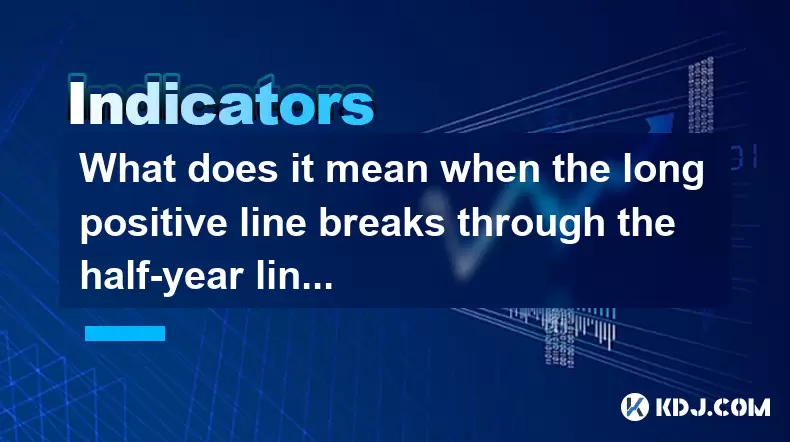
What does it mean when the long positive line breaks through the half-year line and then steps back?
Jul 25,2025 at 06:49pm
Understanding the Long Positive Line in Candlestick ChartsIn the world of cryptocurrency trading, candlestick patterns play a vital role in technical ...
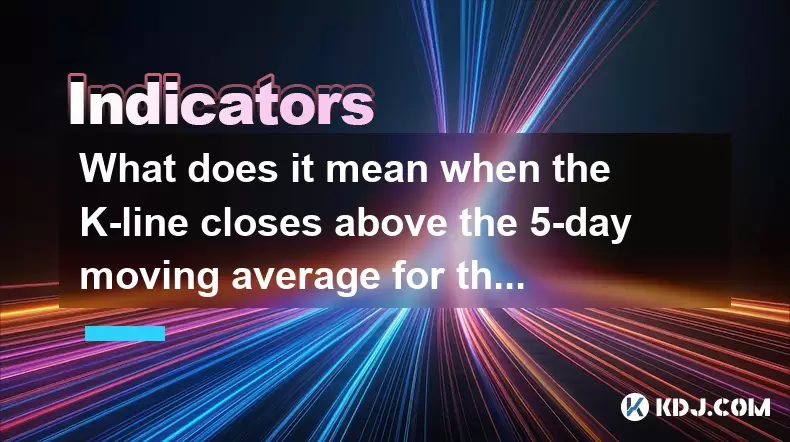
What does it mean when the K-line closes above the 5-day moving average for three consecutive days?
Jul 25,2025 at 10:07pm
Understanding the K-line and 5-day Moving AverageThe K-line, also known as a candlestick, is a critical charting tool used in technical analysis to re...
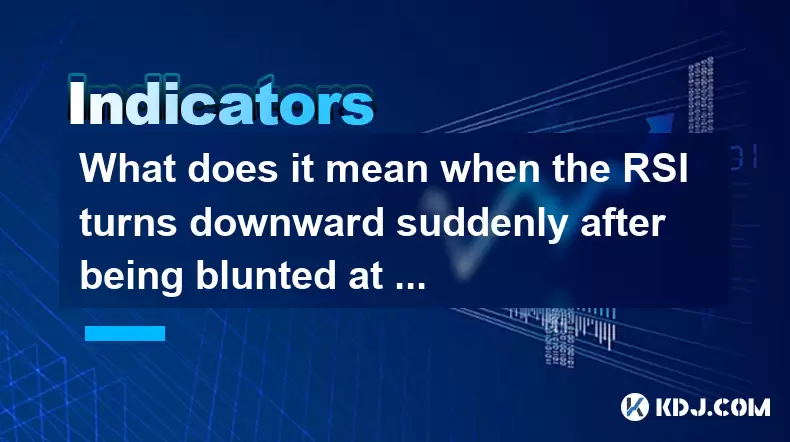
What does it mean when the RSI turns downward suddenly after being blunted at a high level?
Jul 25,2025 at 04:00pm
Understanding the RSI and Its Role in Technical AnalysisThe Relative Strength Index (RSI) is a momentum oscillator that measures the speed and change ...
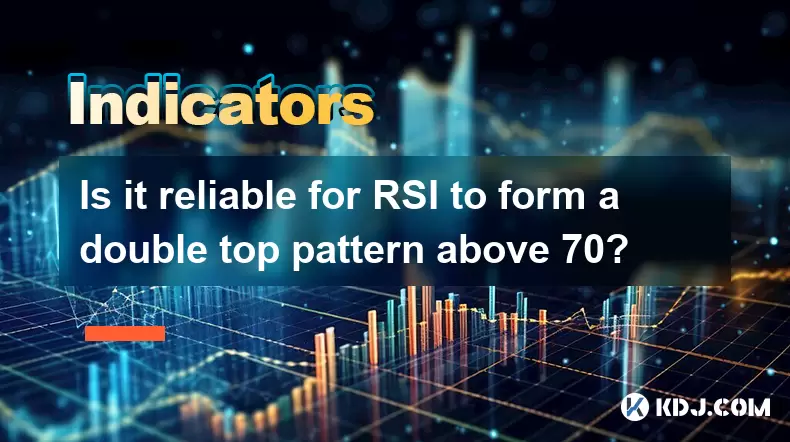
Is it reliable for RSI to form a double top pattern above 70?
Jul 25,2025 at 04:49pm
Understanding the RSI Indicator and Its Role in Technical AnalysisThe Relative Strength Index (RSI) is a momentum oscillator that measures the speed a...

How to interpret that the KDJ D line is downward for a long time but the price is sideways?
Jul 25,2025 at 07:00pm
Understanding the KDJ Indicator and Its ComponentsThe KDJ indicator is a momentum oscillator widely used in cryptocurrency trading to assess overbough...

What does it mean that the KDJ indicator forms a double bottom at a low level?
Jul 25,2025 at 05:08pm
Understanding the KDJ Indicator in Cryptocurrency TradingThe KDJ indicator is a momentum oscillator widely used in cryptocurrency trading to identify ...

What does it mean when the long positive line breaks through the half-year line and then steps back?
Jul 25,2025 at 06:49pm
Understanding the Long Positive Line in Candlestick ChartsIn the world of cryptocurrency trading, candlestick patterns play a vital role in technical ...

What does it mean when the K-line closes above the 5-day moving average for three consecutive days?
Jul 25,2025 at 10:07pm
Understanding the K-line and 5-day Moving AverageThe K-line, also known as a candlestick, is a critical charting tool used in technical analysis to re...

What does it mean when the RSI turns downward suddenly after being blunted at a high level?
Jul 25,2025 at 04:00pm
Understanding the RSI and Its Role in Technical AnalysisThe Relative Strength Index (RSI) is a momentum oscillator that measures the speed and change ...

Is it reliable for RSI to form a double top pattern above 70?
Jul 25,2025 at 04:49pm
Understanding the RSI Indicator and Its Role in Technical AnalysisThe Relative Strength Index (RSI) is a momentum oscillator that measures the speed a...
See all articles

























































































